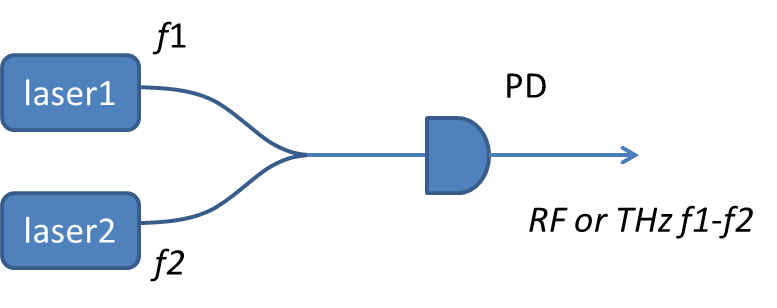Optical communication is a prime example of the combination of microwaves and photoelectrons. Early telephone and telegraph wireless communications, the generation, propagation and reception of signals, all used microwave devices. Low frequency electromagnetic waves are used initially because the frequency range is small and the channel capacity for transmission is small. The solution is to increase the frequency of the transmitted signal, the higher the frequency, the more spectrum resources. But the high frequency signal in the air propagation loss is large, but also easy to be blocked by obstacles. If the cable is used, the loss of the cable is large, and long-distance transmission is a problem. The emergence of optical fiber communication is a good solution to these problems. Optical fiber has very low transmission loss and is an excellent carrier for transmitting signals over long distances. The frequency range of light waves is much greater than that of microwaves and can transmit many different channels simultaneously. Because of these advantages of optical transmission, optical fiber communication has become the backbone of today's information transmission.
Optical communication has a long history, research and application are very extensive and mature, here is not to say more. This paper mainly introduces the new research content of microwave optoelectronics in recent years other than optical communication. Microwave optoelectronics mainly uses the methods and technologies in the field of optoelectronics as the carrier to improve and achieve the performance and application that are difficult to achieve with traditional microwave electronic components. From the perspective of application, it mainly includes the following three aspects.
The first is the use of optoelectronics to generate high-performance, low-noise microwave signals, from the X-band all the way to the THz band.
Second, microwave signal processing. Including delay, filtering, frequency conversion, receiving and so on.
Third, the transmission of analog signals.
In this article, the author only introduces the first part, the generation of microwave signal. Traditional microwave millimeter wave is mainly generated by iii_V microelectronic components. Its limitations have the following points: First, to high frequencies such as 100GHz above, traditional microelectronics can produce less and less power, to the higher frequency THz signal, they can do nothing. Second, in order to reduce phase noise and improve frequency stability, the original device needs to be placed in an extremely low temperature environment. Third, it is difficult to achieve a wide range of frequency modulation frequency conversion. To solve these problems, optoelectronic technology can play a role. The main methods are described below.
1. Through the difference frequency of two different frequency laser signals, a high-frequency photodetector is used to convert microwave signals, as shown in Figure 1.
Figure 1. Schematic diagram of microwaves generated by the difference frequency of two lasers.
The advantages of this method are simple structure, can generate extremely high frequency millimeter wave and even THz frequency signal, and by adjusting the frequency of the laser can carry out a large range of fast frequency conversion, sweep frequency. The disadvantage is that the linewidth or phase noise of the difference frequency signal generated by two unrelated laser signals is relatively large, and the frequency stability is not high, especially if a semiconductor laser with a small volume but a large linewidth (~MHz) is used. If the system weight volume requirements are not high, you can use low noise (~kHz) solid-state lasers, fiber lasers, external cavity semiconductor lasers, etc. In addition, two different modes of laser signals generated in the same laser cavity can also be used to generate a difference frequency, so that the microwave frequency stability performance is greatly improved.
2. In order to solve the problem that the two lasers in the previous method are incoherent and the signal phase noise generated is too large, the coherence between the two lasers can be obtained by the injection frequency locking phase locking method or the negative feedback phase locking circuit. Figure 2 shows a typical application of injection locking to generate microwave multiples (Figure 2). By directly injecting high frequency current signals into a semiconductor laser, or by using a LinBO3-phase modulator, multiple optical signals of different frequencies with equal frequency spacing can be generated, or optical frequency combs. Of course, the commonly used method to obtain a wide spectrum optical frequency comb is to use a mode-locked laser. Any two comb signals in the generated optical frequency comb are selected by filtering and injected into laser 1 and 2 respectively to realize frequency and phase locking respectively. Because the phase between the different comb signals of the optical frequency comb is relatively stable, so that the relative phase between the two lasers is stable, and then by the method of difference frequency as described before, the multi-fold frequency microwave signal of the optical frequency comb repetition rate can be obtained.





















